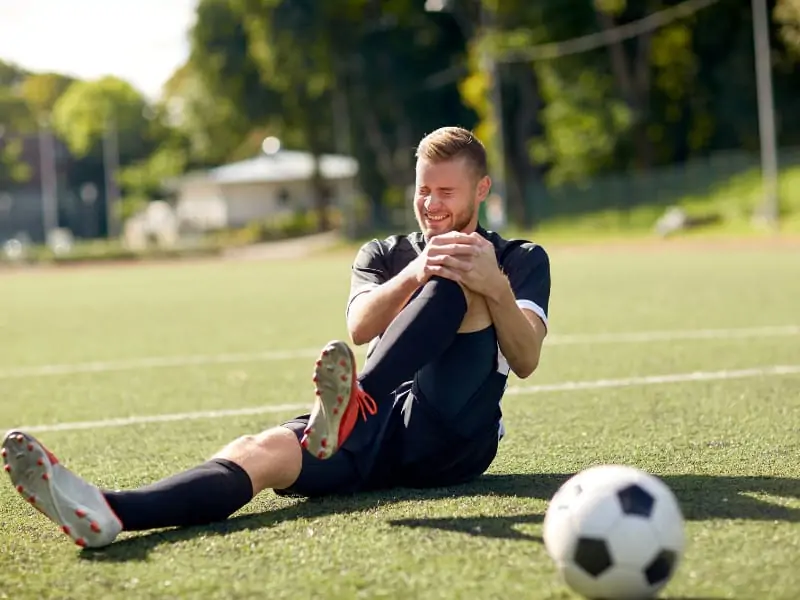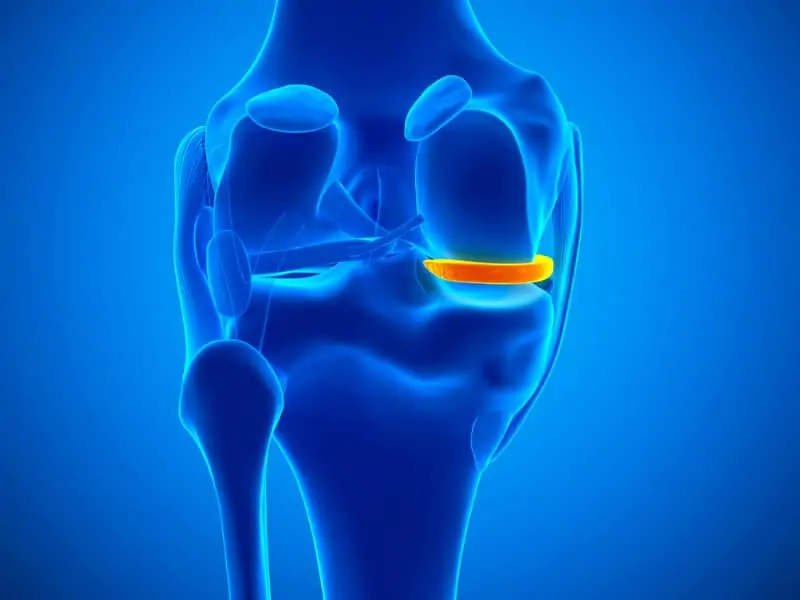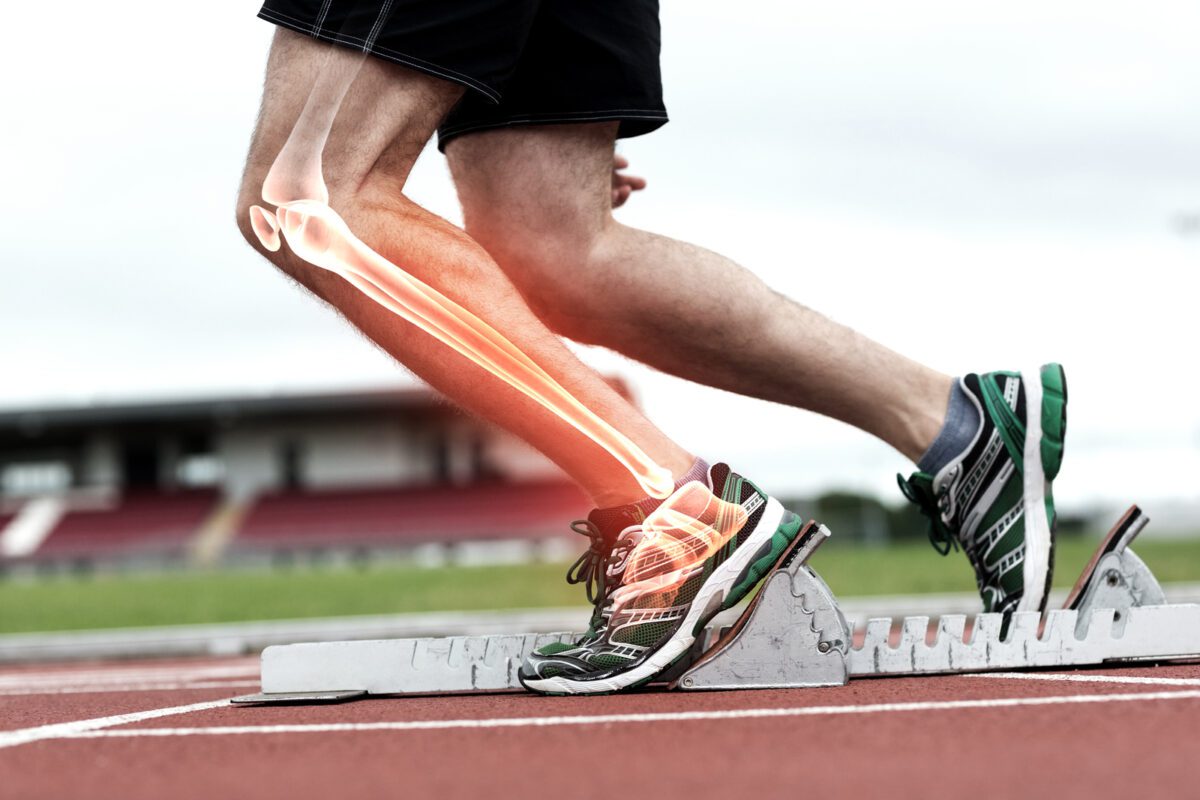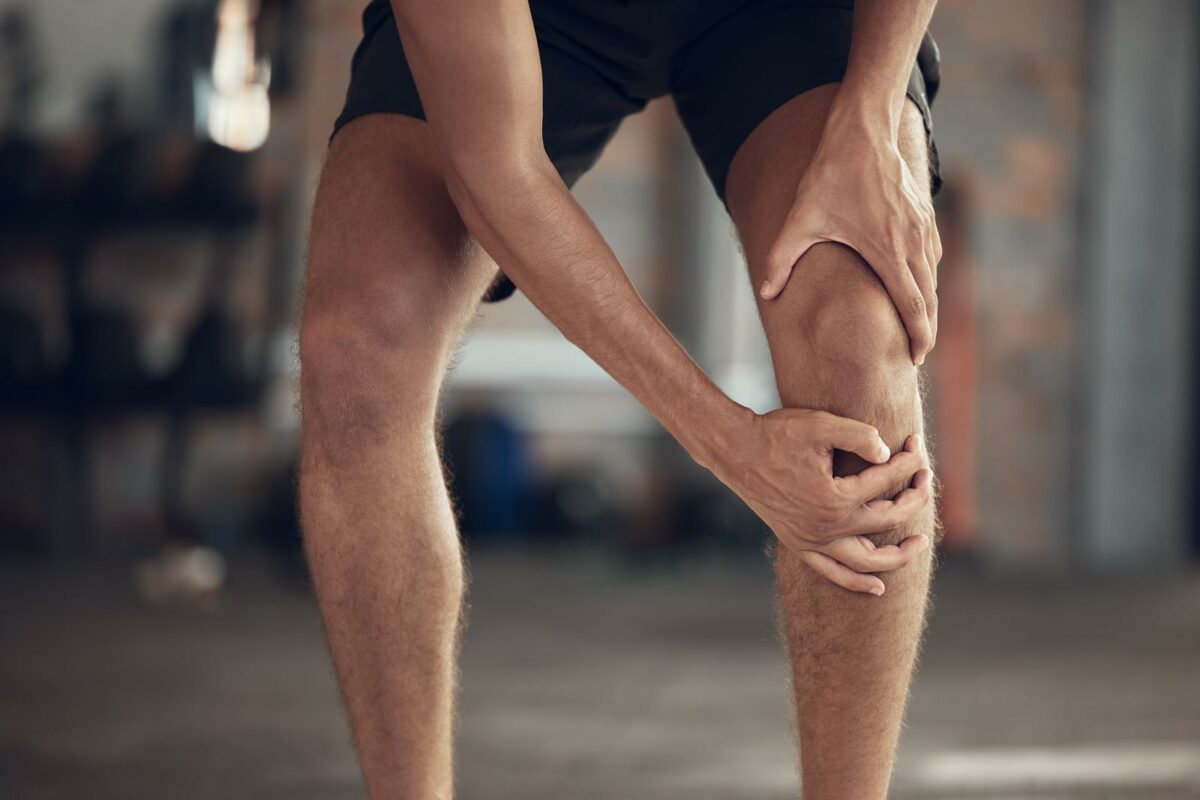Share the post "Playing Soccer No Meniscus (Torn + Recovery)"
An ACL injury is one of the most well-known and highly feared soccer injuries. However, as a player who battled both ACL and meniscus tears, the severity of meniscus injuries is highly underestimated.
12-14% of all knee injuries are meniscus injuries, making it the second most common knee injury. While there are several avenues of treatment for meniscus tears, depending on the situation, one is removal.
This leads many soccer players to wonder if they can play soccer without a meniscus.
Simply put, there’s no simple answer. There are a lot of factors to consider. We’ll help you answer that question today by discussing:
- The physiology and role of the meniscus
- Meniscus tears
- Meniscus treaments
- Top considerations for playing soccer without a meniscus
Determining how to proceed after a meniscus injury is difficult, but we’ll give you the information you need to make a smart decision.

Can You Play Soccer Without a Meniscus
You may be able to lead a relatively active life without a meniscus. However, your chances of playing soccer at a high level without a meniscus are very slim.
Most doctors would not recommend you play soccer without a meniscus. If you must have your entire meniscus removed and you still want to return to soccer, then your doctor may discuss a meniscus transplant with you.
Why can’t you play soccer without a meniscus?
Let’s take a closer look.

What is a Meniscus?
A meniscus is a C-shaped cartilage piece that rests between your thighbone and shinbone. You have two in each knee, one on the medial side and one on the lateral side.
The purpose of the meniscus is to absorb shock in your knee. It helps absorb shock as you run and cushions your knee. Its shape and texture also help ensure knee stability.
Since the menisci have such a general function in the knee, they are important for many actions in soccer.
Whether you are sprinting in a straight line or pushing off to defend a player, you emit a lot of force through the knee with soccer movements.
The menisci help absorb this force and generally keep the knee stable throughout many soccer movements.
- Here’s a fantastic piece of kit that can significantly improve the stability of your knee;
- EFFECTIVE, SOOTHING AND LOCALIZED TREATMENT: Designed to…
- STAY COOLER, LONGER! The highest ice-to-water ratio in the…
- STRONG, SILENT AND LIGHTWEIGHT: Cold Rush uses a brushless…
- INCLUDES A KNEE PAD: For ease of use, the Cold Rush Therapy…
- WARRANTY: Worry-free purchase. 6 month manufacturer…
Product: Updated 2024-07-24 | Images: Amazon Product Advertising API | #ad – soccerblade.com is an Amazon Associate
How Does the Meniscus Tear?
Over time, the meniscus may experience degenerative tearing. This is related to the decreased quality of the tissue as we age. However, this is not the type of tear that young athletes most often experience.
Traumatic tears are more likely to happen to soccer players. Rotating or twisting the knee with force (especially when planted and bearing full weight) may lead to a meniscus tear.
Does this sound similar to how the ACL can tear?
That’s not a coincidence. Many meniscal tears happen at the same time as an ACL tear. While the co-occurrence rates are not fully understood, anywhere from 22% to 86% of meniscal tears happen with an ACL tear.

How do Soccer players tear their meniscus?
Based on how menisci can tear, it’s no wonder that these injuries are common in soccer.
Statistics show that most meniscal tears (73%) occurred in athletes who were soccer players, basketball players or skiers.
Review: Modelling of meniscus of knee joint during soccer kicking
There are many movements and situations in soccer that could lead to a meniscus tear like:
- Pushing off to defend a player.
- Abruptly changing direction.
- Contact to the knee while the foot is planted.
- Awkward landing from a jump.
In my case, I experienced two (medial and lateral of the left knee) menisci tears with my ACL tear.
All of the damage was done when a player kicked full force into the outside of my knee while my foot was planted and bearing all of my weight. Yes, ouch.
The second time I tore my meniscus (about a year later), I was pushing and turning to defend a player. While part of the cause may have been an issue with my initial meniscus repair, it was pushing, and twisting movement nonetheless.

Signs of a Meniscus Tear
Meniscus tears come with some tell-tale signs. Some symptoms of a meniscus tear include:
- Locking knee when trying to bend or straighten
- Pain or sensitivity along the joint line
- Inability to fully bend or straighten
- General knee stiffness
- Delayed swelling a day or more after the injury
- Clicking
- Catching
Basically, the knee feels like it is not moving smoothly when there’s a meniscus tear. In my case, it would feel “stuck” and not switch between bending or straightening well.
These symptoms occur because a torn meniscus is not smooth. When you go to move your knee, the bones slide over the meniscus, and on a torn meniscus they catch. This is what creates locking, clicking, and catching.
Treatments for Meniscal Tears
When it comes to ACLs, a partial tear often requires surgery to repair, because the ACL cannot repair itself.
The meniscus is a little different, in that it can repair itself sometimes but not always.
The treatment option used to handle a meniscus tear depends on:
- The complexity and extent of the tear
- Co-occuring knee injuries (like ACL)
- Location of the tear
- Injury history
- Return to sport goals
Nonoperative (Physical Therapy)

One treatment option is physical therapy. This can work well for meniscus tears that are non-complex and in the optimal healing location.
The “red zone” of the meniscus has an adequate blood supply. It’s the outer part of the meniscus. Since it has a good blood supply, it’s the most likely to heal on without surgical intervention.
If the doctor determines you have a fairly simple tear in a location with a good blood supply, they may prescribe you just rest and physical therapy.
Physical therapy would first involve recovery and healing. The initial goals are to reduce swelling and pain. For example, the PT may use ultrasound therapy or STEM to promote healing.
Then, the goals of physical therapy shift to the range of motion and mobility. Next, you’d focus on strengthening the leg, especially muscles around the knee. Lastly, you would progress through a return to sport protocol, increasing the intensity and impact of activities.
Generally, PT lasts for 4-6 weeks for a meniscus tear, but it could take longer depending on your unique circumstances.
Meniscus Repair
If PT does not work, or the doctor deems the tear too extensive to heal on its own, then you may be recommended a meniscus repair.
A meniscus repair is an arthoscopic knee surgery that involves sutchering the meniscus back together. Doctors will only perform meniscus repair if the injury is in an area with blood supply.
Many times, you will be non-weight-bearing for 4 to 6 weeks following surgery. Post-op, recovery from meniscus repair takes 3 to 6 months of physical therapy.

A meniscectomy (Partial or Full)
The last option for a meniscus tear treatment is a meniscectomy. A meniscectomy involves removing some or all of the meniscus.
With a meniscectomy, you may return to sport in as little as 4 to 6 weeks. However, recovery time depends on a range of factors. In my case, it took 8 weeks to return to soccer training and around 12 to return to playing fully.
While a meniscectomy takes less time to heal than a repair, the long-term outcomes are not as good. This surgery removes the cushion for your knee, which reduces shock absorption and can lead to ongoing pain and arthritis.
- If you were to have a complete lateral meniscectomy, contact pressure would increase upwards of 200%.
How Long Does a Meniscus Injury Take to Heal?
As you can see, the meniscus injury recovery time varies greatly based on the type of treatment used. Of course, the type of treatment depends on the unique injury.
Here’s a quick recap of the average meniscus injury healing time:
- Minor tear treated with only physical therapy: 4-6 weeks
- Tear treated with partial meniscectomy: 4-6 weeks +
- Tear treated with repair: 3-6 months +
Can you still play soccer with a torn meniscus?
Based on the recovery times for a meniscus tear, many players want to know if you can still play soccer with a torn meniscus.
It may be physically possible to play with torn menisucs, but you should not knowlingly play soccer with a torn meniscus.
Risks of Playing with a Torn Meniscus
Here are the top reasons why you should not play soccer with a torn meniscus:
- Pain and swelling
- May affect the mental side of your game
- Can lead to further damage
- Unlikey to heal if you keep playing
Why Some Soccer Players Play with a Torn Meniscus
You should not play with a torn meniscus, but it is possible. Here are some reasons a soccer player might:
- Unaware of the tear
- Very minor tear the doctor approves to continue
- Nearly at the end of a season
- Very strong muscles around the knee
- Not experiencing immense pain
- Does not have time for the recovery before a big game
Is a meniscus tear career-ending?
Years ago, knee injuries were often career-ending for soccer players. Thanks to advancements in modern medicine, most meniscus tears are no longer career-ending.
Three studies performed evaluation after meniscal repair. Of the athletes, 81% to 88.9% returned to sports.
Return to Sports After Athletes Undergo Meniscal Surgery: A Systematic Review
While a meniscus injury can be season-ending and require lengthy recovery or even surgery, it’s an injury many soccer players are able to get past.
However, playing after recovering from a meniscus tear can feel different, especially if you had some of the meniscus trimmed.
I commonly experience irritation and soreness along the joint line, especially after training on hard surfaces. I’ve found that using a heating pad, like this cold rush therapy, helps alleviate pain and prep my knee for play.
- EFFECTIVE, SOOTHING AND LOCALIZED TREATMENT: Designed to…
- STAY COOLER, LONGER! The highest ice-to-water ratio in the…
- STRONG, SILENT AND LIGHTWEIGHT: Cold Rush uses a brushless…
- INCLUDES A KNEE PAD: For ease of use, the Cold Rush Therapy…
- WARRANTY: Worry-free purchase. 6 month manufacturer…
Product: Updated 2024-07-24 | Images: Amazon Product Advertising API | #ad – soccerblade.com is an Amazon Associate
Conclusion
You should not play soccer with a torn or missing ACL. Many athletes, including myself, may play with a partial meniscus after recovering from a partial meniscectomy.
The meniscus provides an essential cushion for your knee, making it crucial for high-impact movements in soccer.
While recovering from a meniscus tear can take quite a long time, many soccer players can return to sport if they want to.
Share the post "Playing Soccer No Meniscus (Torn + Recovery)"
Joel is a seasoned soccer journalist and analyst with many years of experience in the field. Joel specializes in game analysis, player profiles, transfer news, and has a keen eye for the tactical nuances of the game. He played at various levels in the game and coached teams - he is happy to share his insight with you.




